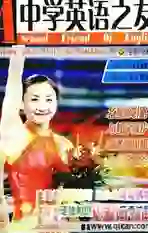一般现在时的用法
2008-10-18闫文丽
闫文丽
一般现在时是表示现在经常反复发生的动作存在的状态或习惯的动作的时态。
一、一般现在时的结构是:
主语+系动词be+介词短语/名词/形容词
主语+动词原形/动词第三人称单数+其它
1. be随主语的人称单复数而分别变成am, is, are。
主语是第三人称单数谓语动词用第三人称单数。
2. 动词的第三人称单数变化规则: (1)一般在动词的词尾加上-s, 如:play—plays, work—works, leave—leaves。(2)以字母s, x, ch, sh, o结尾的词加-es, 如:pass—passes, fix—fixes, teach—teaches, wish—wishes, do—does。 (3)以辅音字母加y结尾的词,先变y为i,再加-es,如: study—studies, cry—cries。
二、一般现在时的常见句式
现以系动词be和行为动词read为例,对一般现在时的肯定句、否定句、疑问句及其简略答语的构成以表格形式加以说明:


※助动词do not的缩写形式为dont, does not的缩写形式是doesnt。
三、一般现在时的用法
1.表示经常的或习惯性的动作。常与often, always, sometimes, every day, on Sundays/Mondays等表示频度的时间状语连用。例如:
I get up at six oclock every day.我每天六点起床。
He often goes to school by bike.他经常乘自行车上学。
2. 表示主语具备的性格、能力和特征。 例如:
She looks like her sister. 她看起来像她的姐姐。
He speaks not only English, but also Japanese.
他不仅会讲英语,而且会讲日语。
3. 表示现在的状态。
He lives in the center of the town. 他居住在城镇的中心。
My parents work in No. 1 middle school. 我的父母在第一中学工作。
4.表示客观事实和普遍真理。 例如:
The moon moves around the earth. 月亮绕着地球转。
Two and two is four. 二加二等于四。
以上是一般现在时的一般用法,下面介绍它的特殊用法。
1.在时间状语从句和条件状语从句中,常用一般现在时代替一般将来时。例如:
If it doesnt rain tomorrow, we will go to the park.
如果明天不下雨,我们将去公园。
I will tell you when he comes back. 当他回来时我会告诉你。
2.表示预先计划或安排好的将来行为。
Tomorrow is Sunday. 明天是星期日。
When does the train leave? 火车什么时候离开?
3.有些表示状态和感觉的动词,如:be, love, like, hate, want, hope, need, know, understand, remember, feel, think, fit, look, see, hear, find等表示现在发生的具体行为时,只用一般现在时,而不用进行时态。例如:
I feel pain in my chest. 我胸疼。
Do you know what I mean? 你知道我什么意思?
4.表示现在发生的具体动作或现在的状态。
Here comes the bus. 车来了。
Whats the time? 现在几点?
巩固练习
一、按要求变句式
1)Kate goes to school at six every day.
否定句:
一般疑问句:
作出否定回答:
2)My books are in my backpack.
否定句:
一般疑问句:
作肯定回答:
二、用所给词的正确形式填空
1. In the evening John and Mary often ____(watch) TV.
2. When ____ he ____(take) a shower every day?
3. Her birthday ____(be) in March.
4. ——____ Lucy ____(speak) English?
——Yes, she ____.
5. He ____(not do) his homework at school.
Key(4)
